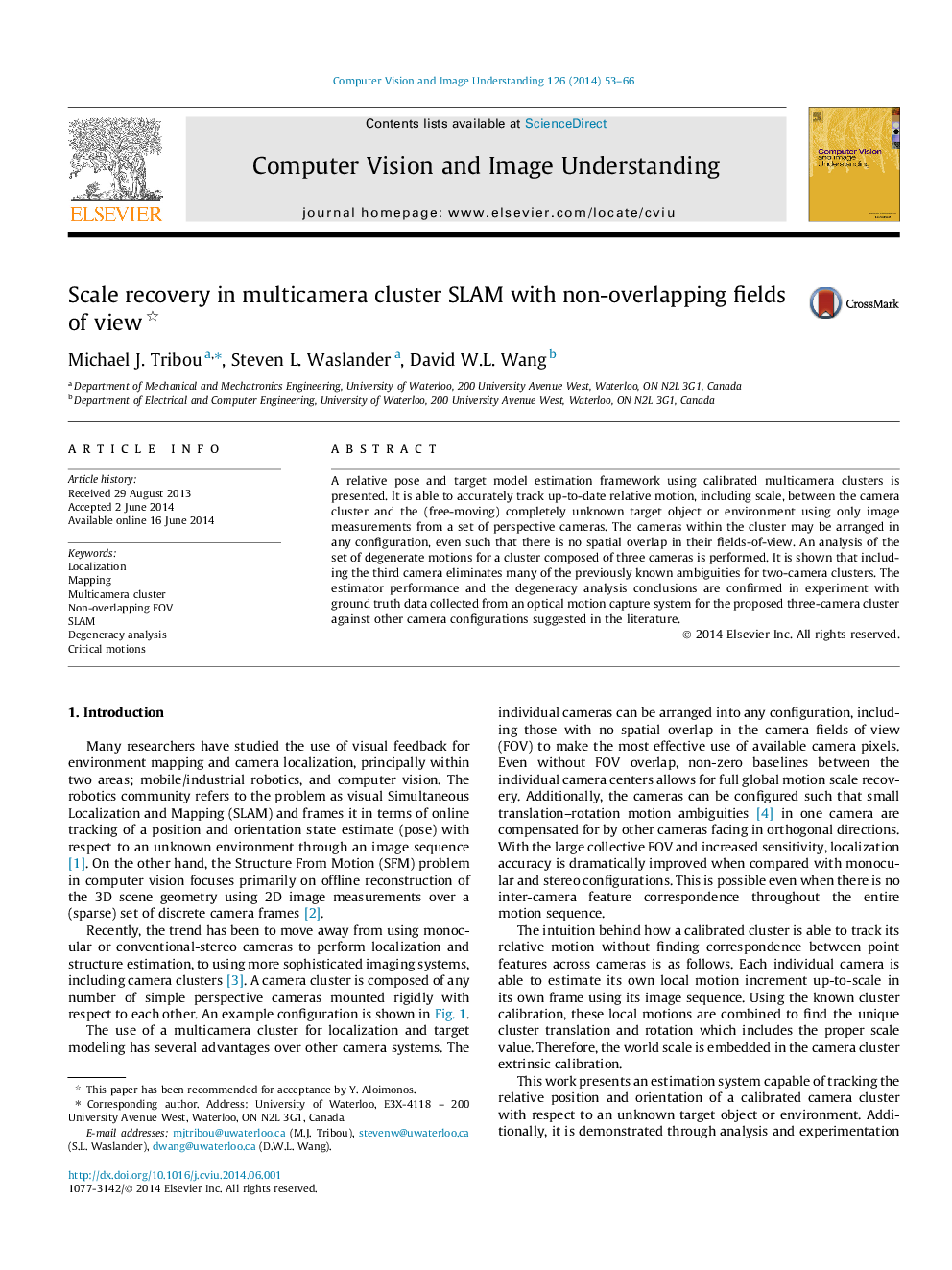| Article ID | Journal | Published Year | Pages | File Type |
|---|---|---|---|---|
| 525824 | Computer Vision and Image Understanding | 2014 | 14 Pages |
•A SLAM framework for multicamera clusters is proposed.•Use of three or more cameras avoids the need for field of view overlap.•System fully initialized using the first set of image measurements.•Motions leading to scale ambiguity are identified for three-camera cluster.•Experiments demonstrate increased accuracy of solution against two-camera cluster.
A relative pose and target model estimation framework using calibrated multicamera clusters is presented. It is able to accurately track up-to-date relative motion, including scale, between the camera cluster and the (free-moving) completely unknown target object or environment using only image measurements from a set of perspective cameras. The cameras within the cluster may be arranged in any configuration, even such that there is no spatial overlap in their fields-of-view. An analysis of the set of degenerate motions for a cluster composed of three cameras is performed. It is shown that including the third camera eliminates many of the previously known ambiguities for two-camera clusters. The estimator performance and the degeneracy analysis conclusions are confirmed in experiment with ground truth data collected from an optical motion capture system for the proposed three-camera cluster against other camera configurations suggested in the literature.
